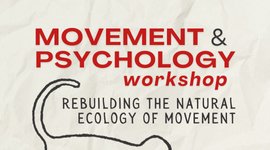
Movement & Psychology Workshop

Dance is for all who desire to move expressively, with rhythm, or in the spirit of the moment. Dance is global and primal, not just for those who train to perform on stage. As somatic innovator Gabrielle Roth liked to say: “If you have a body, you are a dancer.”
Catherine Schaeffer • Moving Consciously: Somatic Transformations through Dance, Yoga, and Touch

